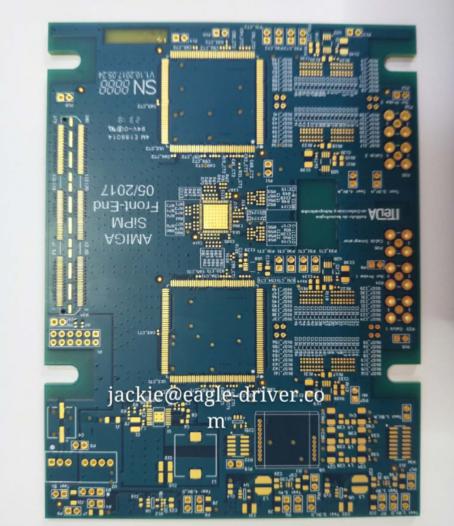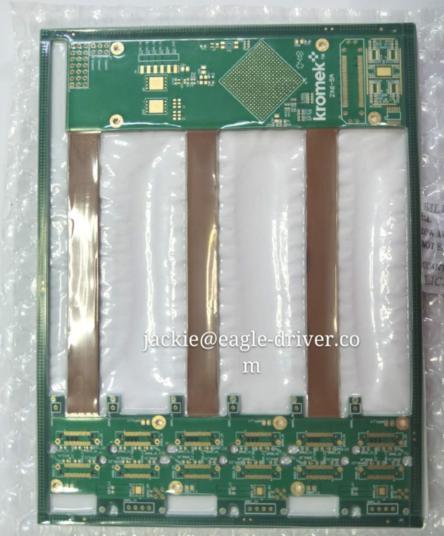


1. Causes and solutions of film
deformation:
The reason:
(1) temperature and humidity
control failure
(2) the temperature rise of the
exposure machine is too high
Solution:
(1) usually the temperature
control in 22 + 2 ℃,
humidity in 55% + / - 5% RH.
(2) use a cold light source or
an aerator with cooling device and constantly replace the backup film
2. Process method of film
deformation correction:
1, in the mastery of digital
programming instrument operation technology, the first film and drilling test
board, two deformation measure its length, width, on the digital programming
device according to the deformation on a long or shortening, the size of the
hole, it with long or shorten the hole after drilling test plate to be close
the deformation of the film, splicing of film from all the work, to ensure the
integrity of the graphics and accuracy.This method is called "change hole
location method".
2. According to the physical
phenomenon that the negative changes with the change of environment temperature
and humidity, the negative in the sealing bag is taken out before copying the
negative. Under the working environment, the negative is hung for 4-8 hours to
make it deform before copying.
3. For the graphs with simple
lines, large line width and spacing and irregular deformation, the deformation
part of the plate can be cut and compared to the hole position of the drilling
test plate, which can be re-inserted before being copied. This method is called
"splicing".
4. The hole on the test plate
is used to enlarge the line sheet of the welding plate to deform and deform, so
as to ensure the minimum ring width technical requirements. This method is
called "welding plate overlapping method".
5. After enlarging the images
on the deformed film in proportion, re-texturing is made. This method is called
"mapping method".
6. Use a camera to enlarge or
reduce the distorted figure, and call this method "photographic
method".

3.Notes to relevant methods:
1. Splicing method:
Application: the line is not
too dense, each layer of film deformation inconsistent film;It is especially
suitable for the deformation of resistance welding film and multilayer power
supply layer film.
Not applicable: film with high
density, wire width and spacing less than 0.2mm;
Note: during splicing, wire
should be cut as little as possible, and welding pad should not be damaged.When
rework after splicing copy, attention should be paid to the correctness of the
connection relationship.
2. Hole location changing
method:
Application: the deformation of
each layer of film is consistent.The same applies to line - intensive film;
Not applicable: film
deformation is not uniform, local deformation is particularly serious.
Note: after the hole position
is lengthened or shortened by using the programming device, the hole position
of out-of-tolerance should be reset.
3. Hanging method:
Apply;A negative that has not
yet deformed and prevents deforming after copying;
Not applicable: distorted film.
Cautions: hang the film in a
ventilated and dark environment (safe or not) to avoid contamination.Make sure
that the drying place is consistent with the temperature and humidity of the
work place.
4. Overlapping pads:
Application: the graph line is
not too dense, the line width and the spacing are larger than 0.30mm;
Not applicable: in particular,
users have strict requirements on the appearance of printed circuit boards;
Note: due to overlapping
copies, the pad is oval.After overlapping and copying, line, disk edge halo and
deformation.
5. Photography:
Application: the film has the
same deformation ratio in the direction of length and width. When it is inconvenient
to re-drill the test board, it is only applicable to silver salt film.
Not applicable: the film is not
consistent in the direction of deformation;
Note: the focus should be
accurate when photographing to prevent line deformation.The negative has a lot
of wastage. In general, it is necessary to have a lot of debugging before
obtaining satisfactory circuit graphics.
